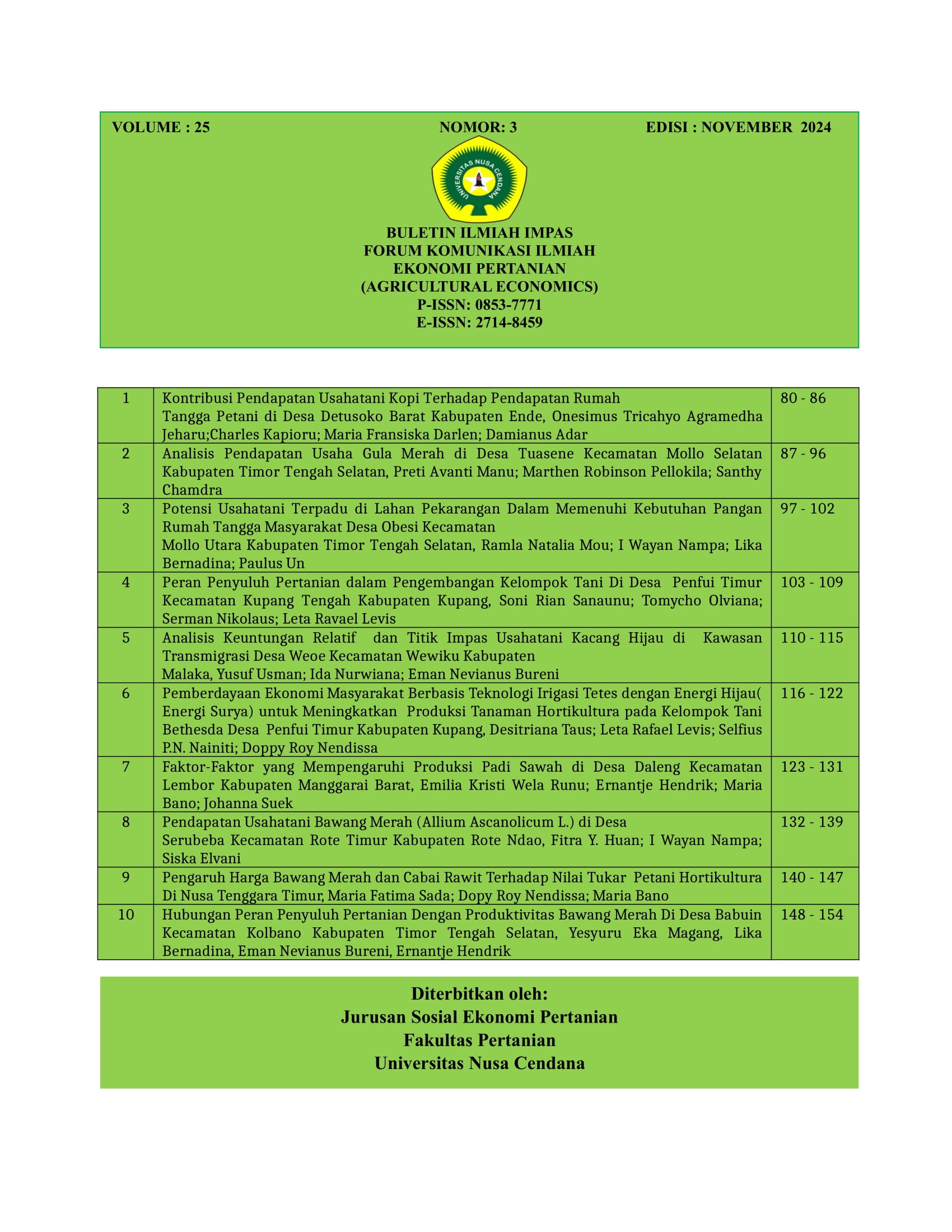Potensi Usahatani Terpadu Di Lahan Pekarangan Dalam Memenuhi Kebutuhan Pangan Rumah Tangga Masyarakat Desa Obesi Kecamatan Mollo Utara Kabupaten Timor Tengah Selatan
Abstract
This research was conducted in Obesi Village, North Mollo District, South Central Timor Regency. The purpose of this study is to find out the potential of integrated farming if applied in household yards, to find out the fulfillment of food availability and diversity of household food consumption of the people of Obesi Village, to find out the contribution of integrated farming in yard land to the fulfillment of household food needs. The data used in this study used primary data and secondary data. The research method uses the formula of food availability and food diversity. The results of this study show that, on average, the yard area owned by the people of Obesi Village is 20 acres and has great potential in carrying out integrated farming because it produces various types of staple food crops, namely taro, sweet potatoes, and cassava with a total production of 679 kg/year. Types of horticultural plants are kale, spinach, mustard greens, eggplant, Chayote, chili, paria with a total production of 168 kg/month. Furthermore, biopharmaceutical plantains, namely lemongrass, leeks, celery, galangal, basil, turmeric with a total production of 11.34 kg/month. And plantation crops, namely coffee, oranges, avocados, hazelnuts, mangoes, bananas, areca nuts, papaya with a total production of 308 kg/year and the last type of livestock cultivated in the yard is chickens, pigs, cows and goats with a total production of 14 heads./year Furthermore, it can provide basic food of 340 kg/year. In addition, it is able to provide diversity of food consumption in households with a diversity coefficient of 18%. And integrated farming on yard land contributes to the fulfillment of food needs, which is 25,483 kcal/cap/month.

 Ramla Natalia Mou(1*)
Ramla Natalia Mou(1*)















